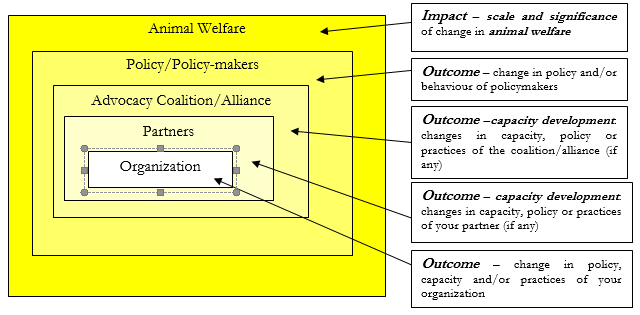
The sort of information to be monitored could include:
- Record of planned activities that have been implemented
- Record of lobbying meetings and communications with targets
- Significant communications received
- Use of your advocacy materials, reports, arguments etc.
- Coalition/alliance development (e.g. coalition/alliance meetings or development of the coalition/alliance)
- Partnership development (e.g. the building of capacity to carry out advocacy)
- Advocacy materials produced and distributed
- Public speaking engagements on the issue
- Media monitoring (press releases sent out, media coverage on the issue e.g. mention of your organization or issue, column inches etc.)
- Lobbying activities
- Mass campaign events or activities (e.g. petitions
- Use of your advocacy materials, reports, arguments etc.
- Any changes in your target’s actions, opinions or attitudes
- Any policy changes on your issue
- Any changes in public opinion on your issue
But, only collect information that will be useful in relation to your indicators!
In each case it is the outcome of the activity that is important, and in particular the impact on animal welfare. The various outcomes and the final impact can be seen in the following diagram and shows the specific set of ‘ripples’ for advocacy-related change:
Each evaluation review needs to ask questions about:
- Change or Outcomes: What's changing, are we making progress
- Processes: How did it change - what helped, what hindered
- Lessons: How, why, why not, in order to feed into
- Decisions: What should we do more of/change/stop..., i.e. a new plan
As can be seen, the review procedure considers change and its context (processes) and helps you to link this with review and planning. In fact, the main purpose of every review should be to shape future plans – because without this your learning can be lost.



